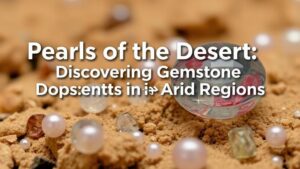Investigating fossilized trees in Namibia’s petrified forest, preserved from prehistoric times.
Investigating Fossilized Trees in Namibia’s Petrified Forest
Namibia’s Petrified Forest, located within the Namib Desert, is a striking geological site that preserves numerous fossilized trees dating back to the Late Triassic period, approximately 240 million years ago. This article delves into the unique features of this fossil forest, its geological significance, and practical tips for rockhounds and mineral collectors interested in this remarkable ancient ecosystem.
The Geological Significance of Namibias Petrified Forest
This UNESCO World Heritage site reveals a crucial chapter in Earths history. The fossilized remains of trees, which are primarily conifers, provide critical evidence of the diverse ecosystems that existed during the Triassic period. well-preserved tree trunks, often measuring up to 30 meters in length and 1.5 meters in diameter, showcase spectacular examples of petrification.
Petrification occurs when organic material is replaced by minerals, creating fossil specimens that can last for millions of years. The primary minerals involved are silica and calcite, which replace the cellulose in the wood. Over time, this process results in beautifully preserved specimens with intricate patterns and colors, making them highly desirable for collectors.
The Fossilized Flora: A Closer Look
The standout feature of Namibia’s Petrified Forest lies in the fossilized Araucarioxylon trees, a species that faced extinction millions of years ago. e trees grew in a vastly different climate than todays arid conditions, reflecting a lush, subtropical environment.
- Tree Types: The predominant fossilized species include conifers, resembling modern-day cedar and pine.
- Preservation: Many logs are preserved in their original positions, providing insights into historical ecosystems.
- Mineral Composition: The petrified wood is predominantly silica, giving it a unique hardness that often ranks between 6 and 7 on the Mohs scale.
Scientific Research and Findings
Continuous research in this area has revealed significant paleobotanical data. In 2022, a dedicated study by the University of Namibia analyzed the isotopic composition of the petrified trees to gain insights into climate variations during the Late Triassic period. The findings indicated that increased rainfall patterns contributed to a surge in plant diversity, evidenced by different wood densities.
Such studies exemplify the importance of fossil sites beyond simple geological interest; they provide invaluable information about Earths climatic history and the evolution of life.
Practical Tips for Rockhounds and Collectors
For those keen on exploring Namibias Petrified Forest, consider the following tips:
- Research Local Regulations: Ensure compliance with local laws regarding fossil collection. Many areas restrict removal to protect natural heritage.
- Field Equipment: Essential tools include a sturdy hammer, chisels, safety goggles, and a soft brush for cleaning specimens without damage.
- Documentation: Keep detailed notes on the location and type of fossils you collect for educational purposes and future reference.
- Join Local Groups: Engage with local rockhound clubs or geological societies that can provide guidance and share experiences.
Real-world Applications and Importance
The fossils found at Namibias Petrified Forest have various applications, particularly in educational settings. They serve as direct physical examples of prehistoric life for students and researchers alike. For collectors, acquiring pieces of petrified wood can contribute to an understanding of the historical significance of our planets ecological changes.
Conclusion: Exploring the Ancient Past
Investigating the fossilized trees of Namibias Petrified Forest offers invaluable insights into geological time and ancient ecosystems. Whether for academic research or personal interest, the preservation of these prehistoric giants continues to spark curiosity and admiration. Remember to approach this natural treasure with respect and care, ensuring its stories of millions of years endure for future generations.



